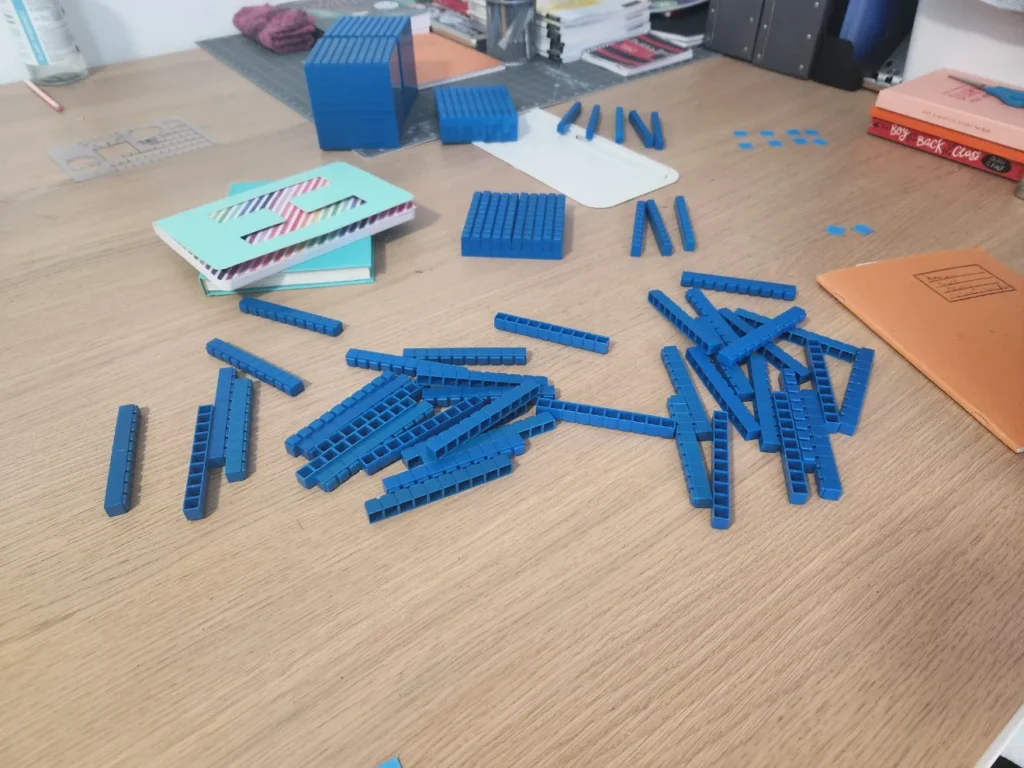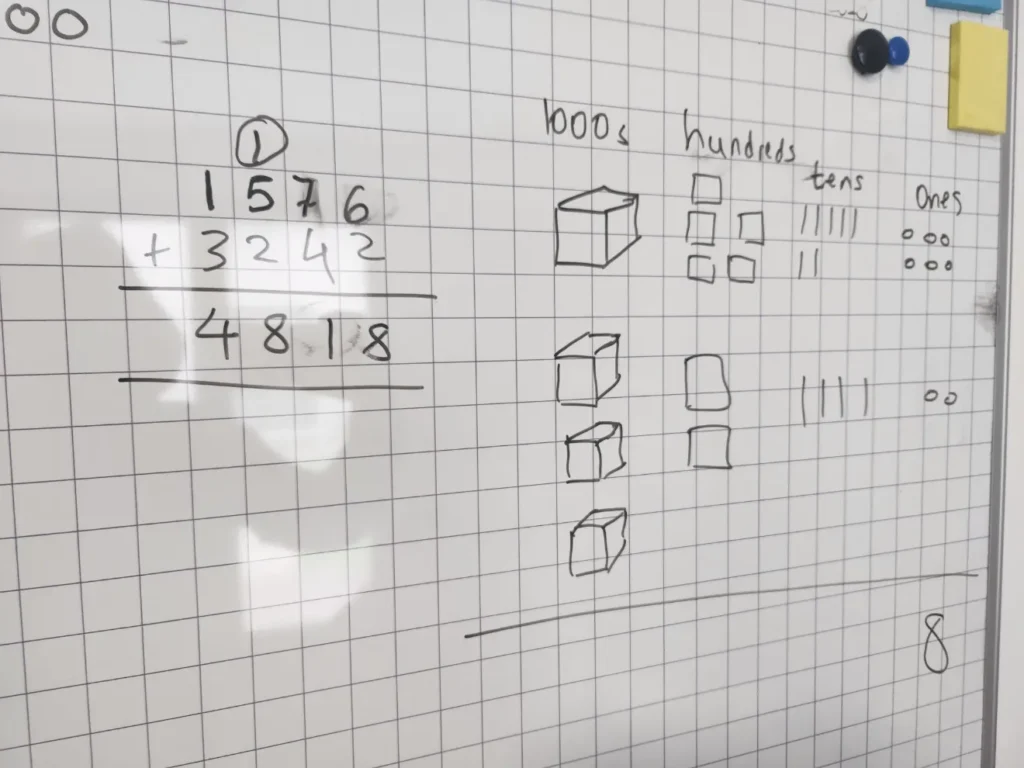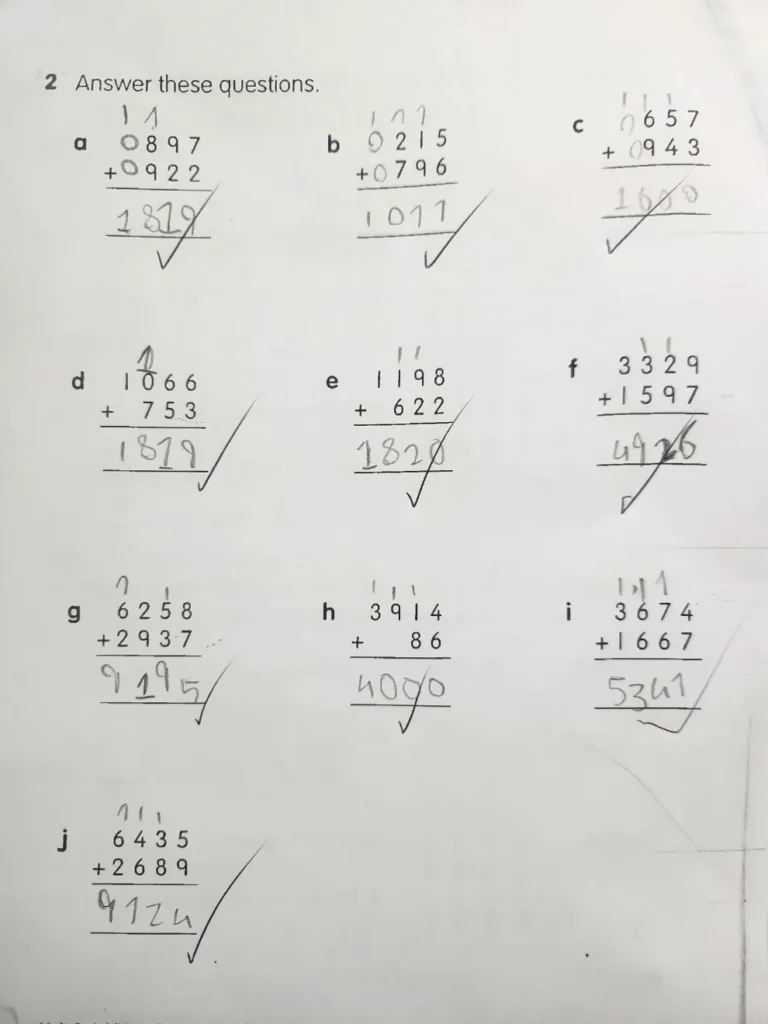CPA Approach – Concrete
CPA Approach – Pictorial & Abstract
I’m really happy I’m homeschooling, I could never have done this in school, thank you so much for home schooling me!”
Twin A
Progress in Maths This Week
This week my twins made noticeable progress in Maths — a subject they’ve never found easy or particularly enjoyable.
We’ve been using the Singapore Maths approach, recognised as one of the world’s leading methods for teaching mathematics. It follows the CPA model — Concrete, Pictorial, Abstract — a sequence based on the research of American psychologist Jerome Bruner. The idea is simple but powerful: start with hands-on materials (concrete), move on to drawings and diagrams (pictorial), and only then tackle the symbolic and abstract side of maths.
“Start with the concrete, move to the pictorial, then the abstract.” — CPA in action
Concrete Stage

We began with Dienes blocks to solve a word problem involving addition. This gave the twins the chance to see and play with the maths in front of them. Questions naturally came up: What happened to all the tens? Why did we move them into the hundreds? What’s left over?
They responded really well, and these conversations helped them visualise the regrouping process. By the time they moved on to paper-based column addition, they already had a clear mental picture of what was happening — and knew that if they ever got stuck, they could sketch out the numbers to help themselves.
“What happened to all the tens? Why did we move them to the hundreds?” — Maths comes alive through questions
Pictorial & Abstract Stage

After exploring the problem with blocks, we looked at the same idea through images. This step gave them the confidence to draw when needed, bridging the gap between hands-on learning and abstract methods.
I made sure to connect the concrete and pictorial approaches, showing them how closely linked they are rather than treating them as separate steps. This really helped them understand the relationship between the two.
The Outcome
Using manipulatives gave the twins a deeper understanding of addition. They were soon adding four-digit numbers confidently and with no hesitation.
“Their confidence is growing — and they’re even excited to do maths.”

Reflection
The best part wasn’t just their accuracy — it was the confidence. They were focused, working independently, proud of their progress, and even said they were happy and excited to do maths.
That moment made me feel truly grateful for homeschooling. One of the twins even said:
“I’m really happy I’m homeschooling. I could never have done this in school. Thank you so much for homeschooling me!” — Twin A
For me, that says it all.
As a Singapore Maths consultant I support schools using the approach, I can now finally support my own twins with the approach. If you would lik to find out more about Singapore Maths then visit Singapore Maths Academy or The Bar Model Company.